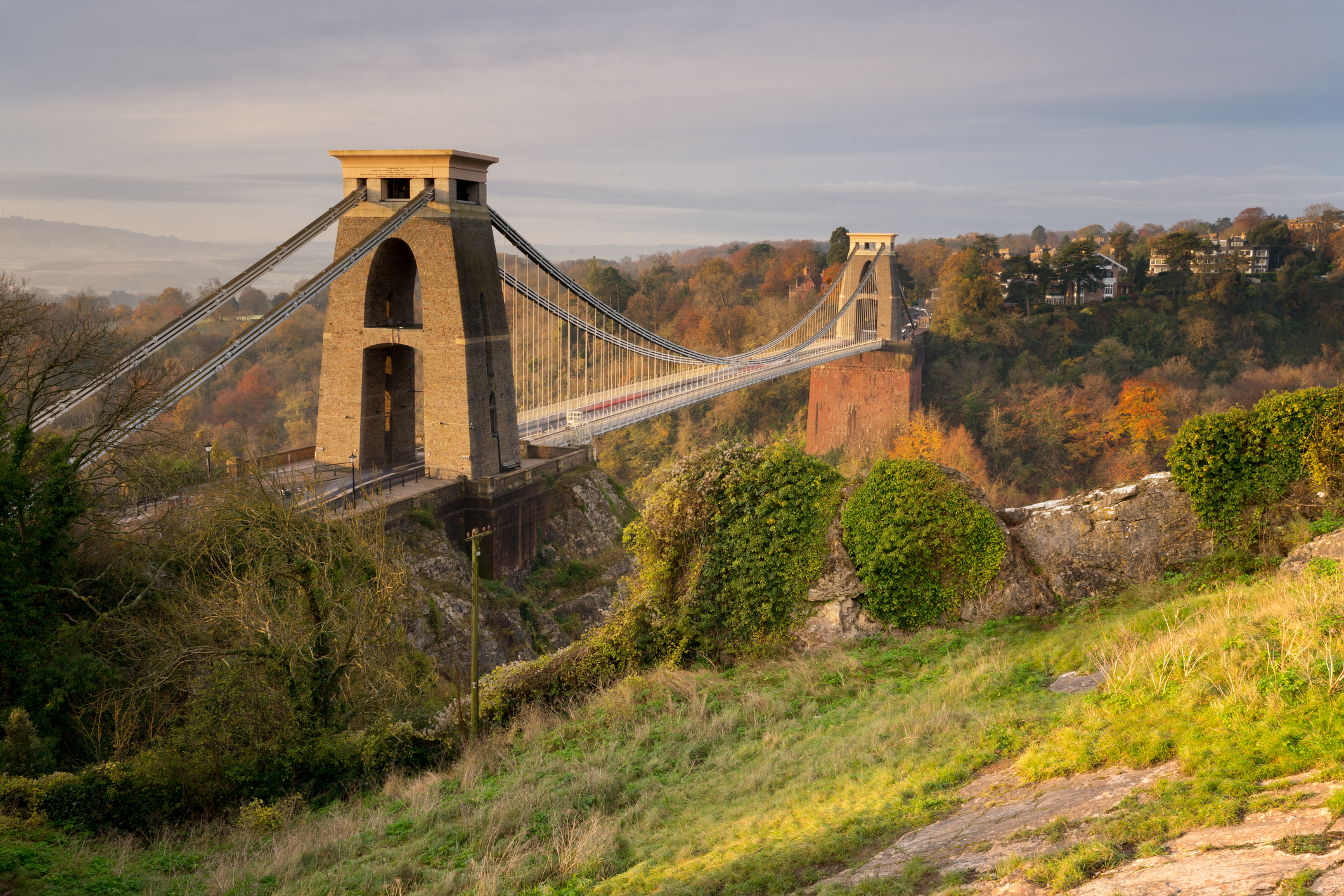8 December 1864: the Clifton Suspension Bridge opens
The Clifton Suspension Bridge, based on Isambard Kingdom Brunel's design, was finally opened on this day in 1864.

In 1754, William Vick, a Bristol wine merchant, left £1,000 in his will to be invested and, once it had grown to £10,000, to be used to finance the building of a new stone bridge, free of tolls, across the Avon gorge.
By 1829, Vick's fund had only grown to £8,000. That was nowhere near enough for a free stone bridge. So an Act of Parliament was passed which allowed for an iron suspension bridge financed by tolls. And on 1 October, a competition to design the bridge, with a 100 guinea prize, was announced.
Twenty two designs were received, and Thomas Telford was drafted in to judge them. He rejected them all, including one from the 23-year-old Isambard Kingdom Brunel. He was subsequently invited to submit his own, but his design did not prove a popular one. And so a second competition was held. Brunel came in second, but somehow convinced the judges he was worthy for first place.
Subscribe to MoneyWeek
Subscribe to MoneyWeek today and get your first six magazine issues absolutely FREE

Sign up to Money Morning
Don't miss the latest investment and personal finances news, market analysis, plus money-saving tips with our free twice-daily newsletter
Don't miss the latest investment and personal finances news, market analysis, plus money-saving tips with our free twice-daily newsletter
Construction began in March 1831. But it was brought to a halt by rioting in Bristol later that year, and didn't restart for five years. Then, in 1843, after the stone piers had been built, the money ran out. The bridge had still not been finished when Brunel died in 1859. But his fellow engineers determined to completed it as his memorial.
And so work restarted. The plans were revised by William Barlow and Sir John Hawkshaw, and chains were brought from the Brunel-designed Hungerford suspension bridge in London, which was being demolished. The Clifton Suspension Bridge was finally completed 33 years after it was first begun. And on 8 December, 1864, it was opened.
The bridge is 214m long between the piers and the roadway is 75m above mean high water. Its height makes it a notorious suicide spot. But in 1885, a young woman called Sarah Anne Henley leapt from the bridge and survived the fall, after landing in the soft mud below. More cheerfully, it was the site of the world's first bungee jump on 1 April 1979, when members of Oxford University's Dangerous Sports Club jumped from the bridge in top hats and tails, sparking a new worldwide leisure pastime.
Get the latest financial news, insights and expert analysis from our award-winning MoneyWeek team, to help you understand what really matters when it comes to your finances.
Ben studied modern languages at London University's Queen Mary College. After dabbling unhappily in local government finance for a while, he went to work for The Scotsman newspaper in Edinburgh. The launch of the paper's website, scotsman.com, in the early years of the dotcom craze, saw Ben move online to manage the Business and Motors channels before becoming deputy editor with responsibility for all aspects of online production for The Scotsman, Scotland on Sunday and the Edinburgh Evening News websites, along with the papers' Edinburgh Festivals website.
Ben joined MoneyWeek as website editor in 2008, just as the Great Financial Crisis was brewing. He has written extensively for the website and magazine, with a particular emphasis on alternative finance and fintech, including blockchain and bitcoin.
As an early adopter of bitcoin, Ben bought when the price was under $200, but went on to spend it all on foolish fripperies.
-
 Warning as Brits face €6,900 fine if they fail to follow new Spanish travel insurance rule
Warning as Brits face €6,900 fine if they fail to follow new Spanish travel insurance ruleTourists are being warned of new rules in Spain that mean you must have fully comprehensive health cover in your travel insurance
-
 Rachel Reeves to announce permanent 95% mortgage guarantee scheme
Rachel Reeves to announce permanent 95% mortgage guarantee schemeMortgages offered through the scheme will mean first-time buyers and home movers can buy a home with a deposit of just 5%

